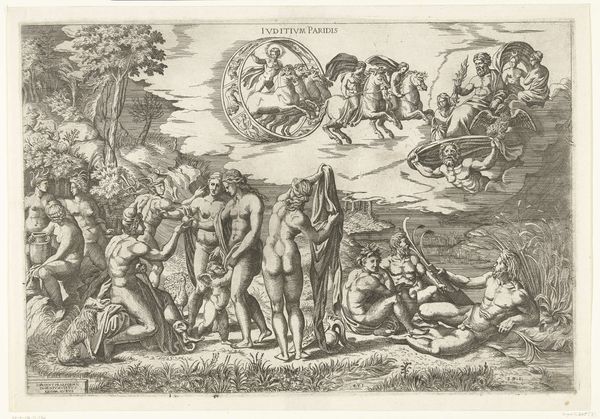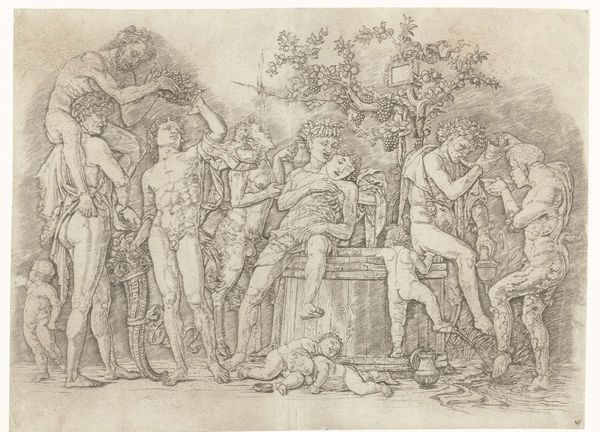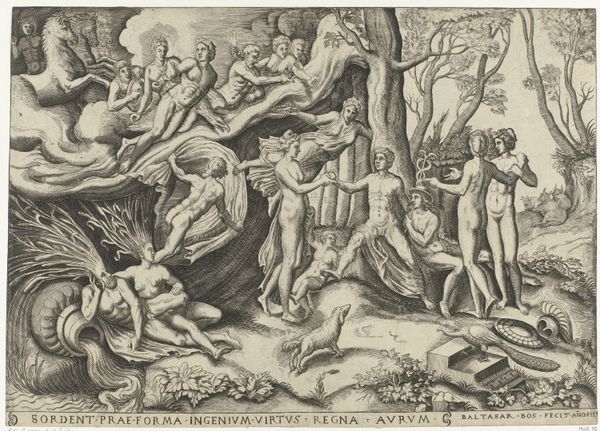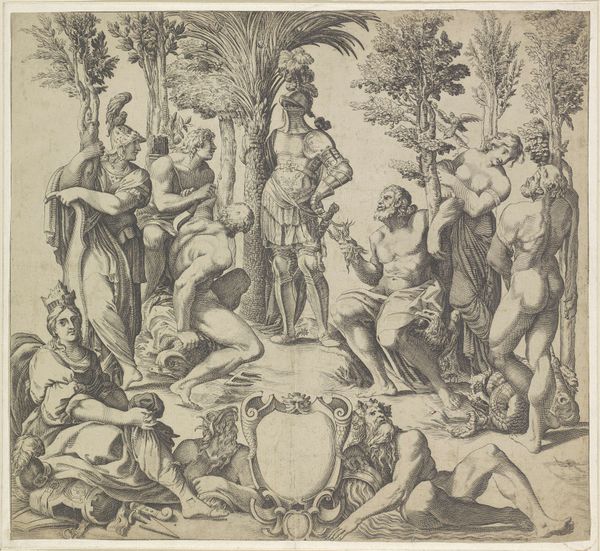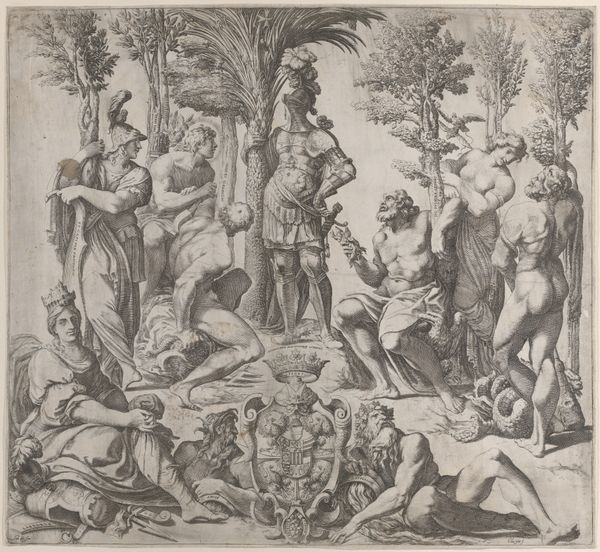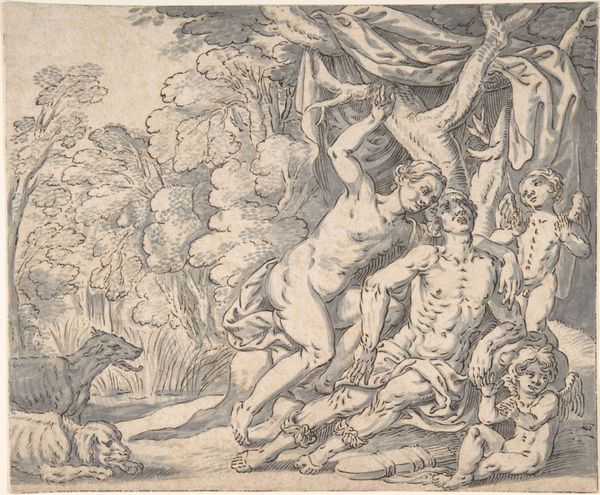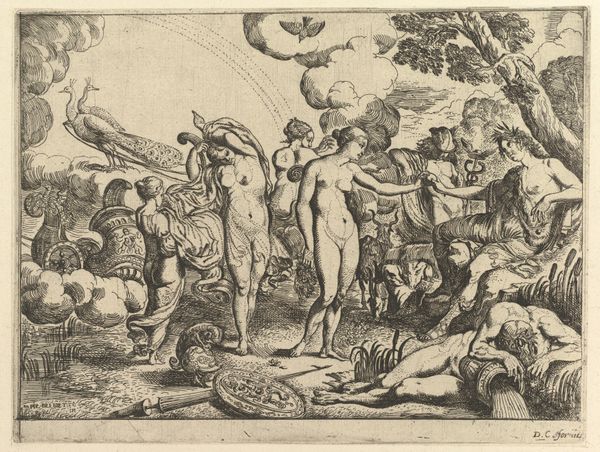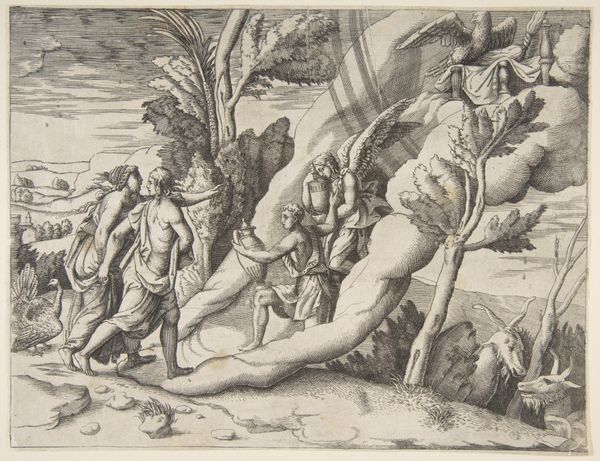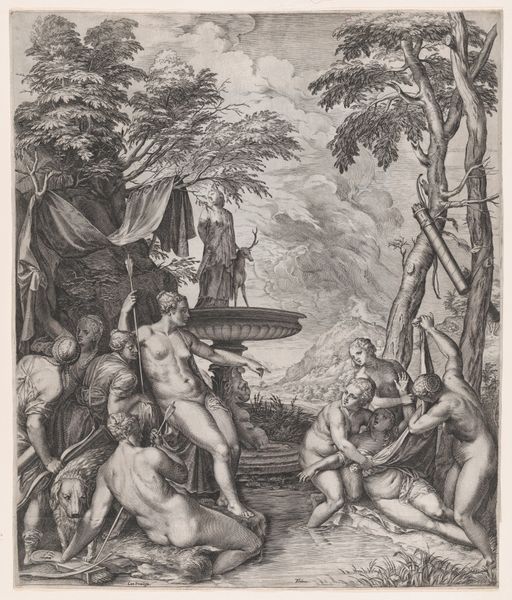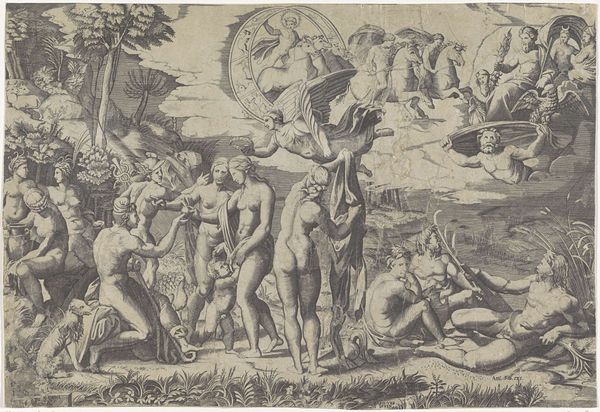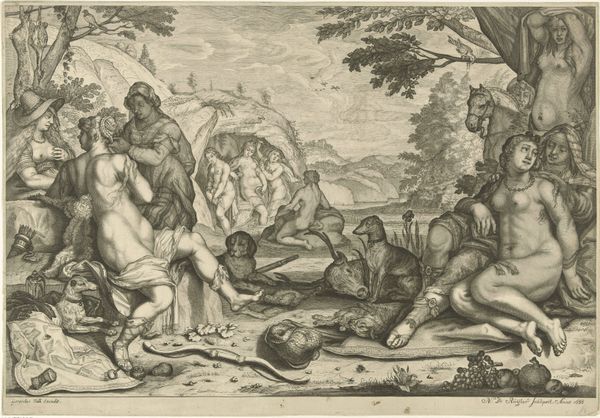
print, engraving
#
allegory
#
baroque
# print
#
landscape
#
classical-realism
#
figuration
#
pencil drawing
#
line
#
history-painting
#
nude
#
engraving
Dimensions: height 283 mm, width 381 mm
Copyright: Rijks Museum: Open Domain
Editor: Here we have Fabrizio Chiari’s "Venus en Mercurius" from 1636, created as an engraving. It strikes me as quite theatrical in its composition. What are your thoughts on this work? Curator: Focusing on the formal elements, consider the composition’s structured arrangement. The figures are carefully placed within a landscape, forming a clear visual hierarchy. Venus and Mercury serve as focal points. How does the artist employ line to define forms and create tonal variations within the print? Editor: The lines do seem incredibly precise, creating almost a soft, hazy effect in certain areas like the clouds, while other lines create the muscular definition in the figures. The textures, especially in the trees, are striking. Curator: Precisely. Notice how Chiari modulates the density and direction of the lines to suggest form and texture, which leads to a spatial complexity within the landscape. Also, consider the role of light and shadow. Can you identify how their interplay shapes your perception of depth and volume? Editor: Yes, I see that! The darker, heavier lines emphasize shadow, providing depth. I had initially considered the image more for its historical context but observing its composition truly allows one to understand Chiari's formal mastery. Curator: Indeed. Through a careful examination of its visual structure, we gain a more complete understanding and can appreciate the engraving on a much deeper level. Editor: Thank you, I've definitely learned a lot about analyzing the use of form.
Comments
No comments
Be the first to comment and join the conversation on the ultimate creative platform.
